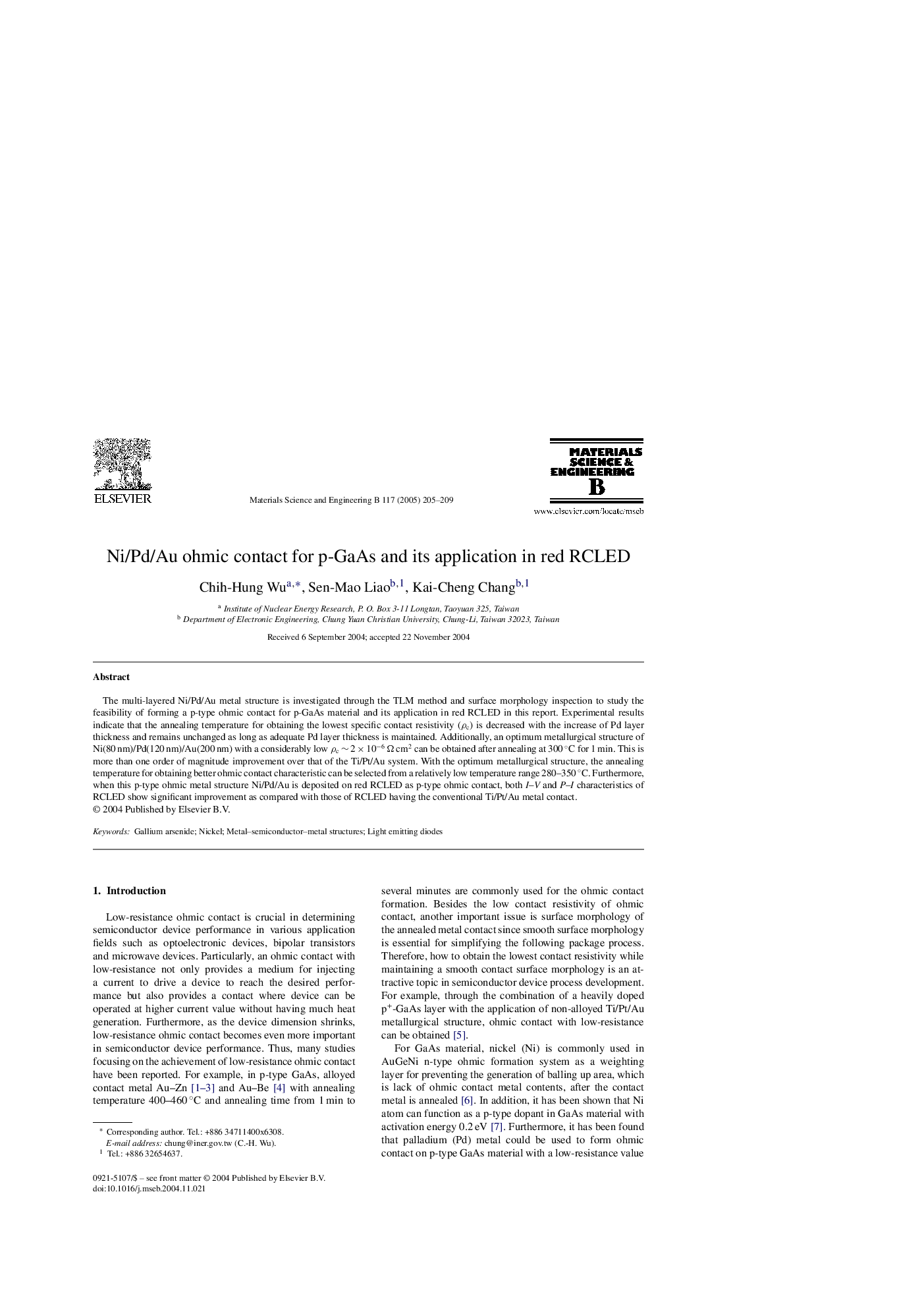| Article ID | Journal | Published Year | Pages | File Type |
|---|---|---|---|---|
| 10640066 | Materials Science and Engineering: B | 2005 | 5 Pages |
Abstract
The multi-layered Ni/Pd/Au metal structure is investigated through the TLM method and surface morphology inspection to study the feasibility of forming a p-type ohmic contact for p-GaAs material and its application in red RCLED in this report. Experimental results indicate that the annealing temperature for obtaining the lowest specific contact resistivity (Ïc) is decreased with the increase of Pd layer thickness and remains unchanged as long as adequate Pd layer thickness is maintained. Additionally, an optimum metallurgical structure of Ni(80 nm)/Pd(120 nm)/Au(200 nm) with a considerably low Ïc â¼Â 2 Ã 10â6 Ω cm2 can be obtained after annealing at 300 °C for 1 min. This is more than one order of magnitude improvement over that of the Ti/Pt/Au system. With the optimum metallurgical structure, the annealing temperature for obtaining better ohmic contact characteristic can be selected from a relatively low temperature range 280-350 °C. Furthermore, when this p-type ohmic metal structure Ni/Pd/Au is deposited on red RCLED as p-type ohmic contact, both I-V and P-I characteristics of RCLED show significant improvement as compared with those of RCLED having the conventional Ti/Pt/Au metal contact.
Related Topics
Physical Sciences and Engineering
Materials Science
Electronic, Optical and Magnetic Materials
Authors
Chih-Hung Wu, Sen-Mao Liao, Kai-Cheng Chang,
